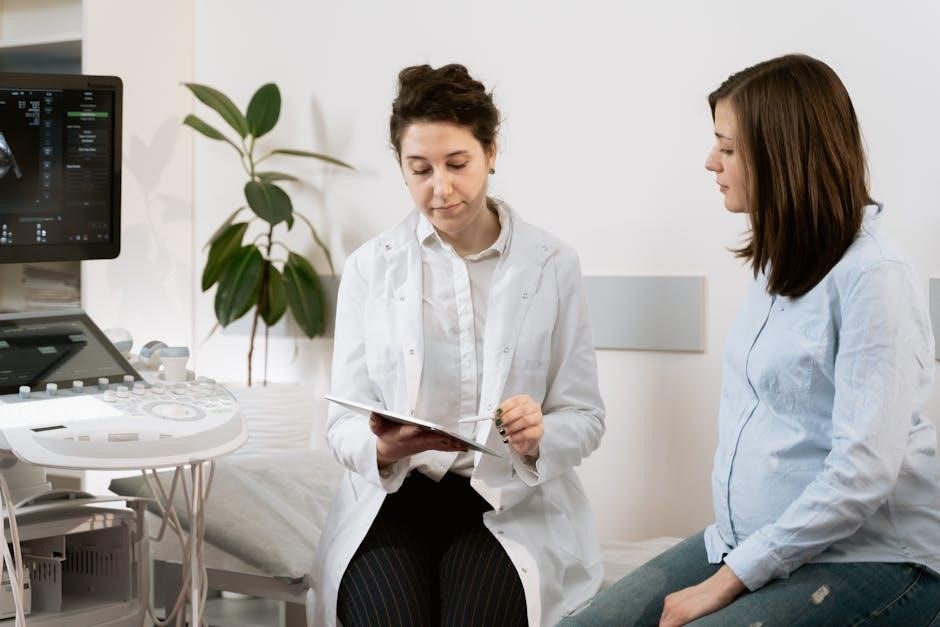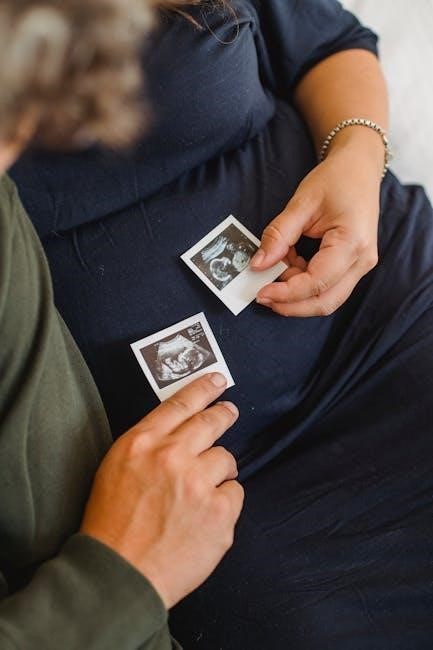Ultrasound-guided BBL is an advanced surgical technique enhancing buttock contouring using real-time imaging for precise fat placement, improving safety and aesthetic outcomes compared to traditional methods.
1.1 What is a Brazilian Butt Lift (BBL)?
A Brazilian Butt Lift (BBL) is a surgical procedure that enhances the shape and size of the buttocks using the patient’s own fat. It involves liposuction to harvest fat from areas like the abdomen, thighs, or flanks, which is then transferred to the buttocks. This method provides a natural aesthetic outcome, allowing for a more contoured and voluminous silhouette. The BBL has gained popularity as a safer alternative to buttock implants, offering personalized results with minimal foreign material use.
1.2 The Role of Ultrasound in Modern BBL Procedures
Ultrasound technology plays a pivotal role in modern BBL procedures by providing real-time imaging, enabling surgeons to precisely locate fat deposits and target specific gluteal compartments. This advancements allows for accurate fat placement, minimizing the risk of complications such as fat embolism. Ultrasound guidance enhances safety by visualizing the exact positioning of fat grafts and avoiding critical structures like blood vessels and nerves. This precision not only improves aesthetic outcomes but also increases fat survival rates, making the procedure more reliable and effective compared to traditional methods.

How Ultrasound-Guided BBL Works
Ultrasound-guided BBL uses real-time imaging to precisely place fat in targeted gluteal areas, ensuring accurate and safe contouring for desired aesthetic results.
2.1 Real-Time Imaging for Precise Fat Placement
Real-time imaging in ultrasound-guided BBL allows surgeons to visualize fat placement precisely, ensuring fat is deposited in the correct subcutaneous layers. This minimizes complications by avoiding blood vessels and nerves, enhancing safety and accuracy. The technique enables targeting of specific gluteal compartments, achieving natural-looking results. By providing clear visualization, ultrasound guidance improves the surgeon’s ability to sculpt the buttocks effectively, leading to better aesthetic outcomes and higher patient satisfaction.
2.2 Targeting Specific Gluteal Compartments
Ultrasound-guided BBL enables surgeons to target specific gluteal compartments, ensuring fat is placed precisely in the subcutaneous tissue. This advanced technique allows for accurate identification of fascial layers and muscle planes, optimizing fat distribution. By avoiding deeper muscle layers, the risk of complications is minimized. Surgeons can selectively enhance areas like the upper or lower buttocks, creating a more natural and proportionate shape. This level of customization leads to better aesthetic outcomes and higher patient satisfaction with the final result.
Benefits of Ultrasound-Guided BBL
Ultrasound-guided BBL enhances safety, precision, and aesthetic outcomes. It reduces risks, improves fat survival rates, and allows for targeted fat placement, ensuring natural-looking results with minimal complications.
3.1 Increased Precision and Accuracy
Ultrasound-guided BBL offers unparalleled precision, allowing surgeons to visualize fat placement in real-time. This ensures accurate delivery to specific gluteal compartments, avoiding vital structures and enhancing contouring. The technology minimizes human error, leading to more consistent and desirable aesthetic outcomes. Patients benefit from a natural-looking result, as fat is distributed evenly and strategically. This level of accuracy not only improves safety but also boosts patient satisfaction, making it a significant advancement over traditional methods.
3.2 Reduced Risk of Complications
Ultrasound-guided BBL significantly reduces complications by enabling real-time visualization of fat placement. This technology helps surgeons avoid inserting fat into muscles or blood vessels, minimizing risks of embolism or nerve damage. Traditional BBL methods carry higher risks due to blind fat injection, but ultrasound guidance enhances safety. The precise imaging also reduces the likelihood of fat misplacement, ensuring subcutaneous-only grafting. This advanced technique not only improves outcomes but also lowers the incidence of serious complications, making it a safer choice for patients seeking buttock enhancement.
3.3 Improved Fat Survival Rate
Ultrasound-guided BBL enhances fat survival by ensuring precise placement in subcutaneous tissue. Real-time imaging allows surgeons to avoid over-injection and trauma to fat cells, promoting better graft take. Traditional methods risk fat necrosis due to improper placement, but ultrasound guidance improves fat viability. This leads to more predictable and longer-lasting results, as the transplanted fat integrates better with surrounding tissue. The use of ultrasound minimizes damage to fat cells during injection, further boosting survival rates and overall aesthetic success.

The Ultrasound-Guided BBL Procedure
The procedure involves pre-operative preparation, fat harvesting via liposuction, and precise fat transfer using ultrasound guidance to ensure safe and accurate placement in target areas.
4.1 Pre-Operative Preparation
Pre-operative preparation for an ultrasound-guided BBL involves consultations, medical evaluations, and lifestyle adjustments. Patients must avoid certain medications, nicotine, and alcohol to minimize risks. Surgeons typically provide detailed instructions, including dietary advice and activity restrictions. The procedure, lasting 2-4 hours, requires anesthesia preparation. Ensuring the patient is in optimal health is crucial for a safe and successful outcome. Proper preparation helps reduce complications and supports the effectiveness of the ultrasound-guided fat transfer process.
4.2 Fat Harvesting and Transfer Process
During the ultrasound-guided BBL, fat is harvested from selected donor sites using liposuction. The extracted fat is purified to ensure only viable cells are used. Ultrasound imaging guides the precise injection of fat into specific gluteal compartments, allowing for even distribution and natural contouring. This real-time visualization enhances accuracy, minimizing risks such as fat embolism. The process ensures a safer and more controlled fat transfer, leading to improved aesthetic results and higher fat survival rates compared to traditional methods.

Recovery and Aftercare
Recovery typically takes 6-8 weeks, requiring careful post-operative care. Patients must avoid sitting directly on the buttocks, wear compression garments, and follow surgeon instructions to ensure optimal healing and results.
5.1 Expected Recovery Time (6-8 Weeks)
Patients typically require 6-8 weeks for full recovery after an ultrasound-guided BBL. During this period, it’s crucial to follow post-operative instructions carefully. Avoiding direct pressure on the buttocks is essential to ensure proper fat survival and optimal results. Wearing compression garments and maintaining a restrictive diet are often recommended. Light activities can resume within a few weeks, but strenuous exercises should be avoided until cleared by the surgeon. Adequate rest and avoiding sitting for extended periods are vital for healing and achieving the desired contour.
5.2 Importance of Following Surgeon Instructions
Adhering to your surgeon’s post-operative instructions is crucial for a successful recovery after an ultrasound-guided BBL. Proper care ensures optimal fat survival, minimizes complications, and supports the healing process. Wearing compression garments, avoiding prolonged sitting, and following dietary advice are essential. Patients must also avoid strenuous activities and direct pressure on the buttocks during the recovery period. Failure to comply may lead to suboptimal results or prolonged healing. Consistent follow-up appointments and open communication with your surgeon further enhance safety and satisfaction with the final outcome.
Who is a Candidate for Ultrasound-Guided BBL?
Ideal candidates for an ultrasound-guided BBL are individuals seeking a natural buttock enhancement with their own fat; They should have excess fat in donor areas, such as the abdomen or thighs, and be in overall good health. A stable weight, realistic expectations, and good skin elasticity are essential. Patients must not smoke, as this can impair healing. Women and men close to their ideal weight with a desire for a shapelier silhouette are typically suitable. A commitment to post-operative care is also crucial for optimal results.

Risks and Complications
While ultrasound-guided BBL is safer than traditional methods, risks include infection, fat necrosis, and seroma. Rarely, pulmonary fat embolism may occur, though ultrasound reduces this likelihood. Choosing an experienced surgeon minimizes complications, as does adhering to post-operative care. Scarring and asymmetry are possible, underscoring the importance of proper aftercare. Patients should discuss their medical history with their surgeon to assess suitability, ensuring a safe and successful procedure.
Ultrasound-Guided BBL vs. Traditional BBL
Ultrasound-guided BBL offers enhanced precision and safety compared to traditional methods. It uses real-time imaging to avoid vital structures, reducing risks like fat embolism. Traditional BBL relies on blind fat injection, increasing complications. Ultrasound-guided procedures often result in higher fat survival rates and more natural contours. While both methods aim for aesthetic improvement, ultrasound guidance minimizes risks and improves outcomes, making it a preferred choice for modern surgeons and patients seeking safer, more accurate results with fewer complications and faster recovery times.